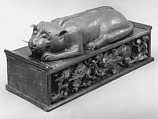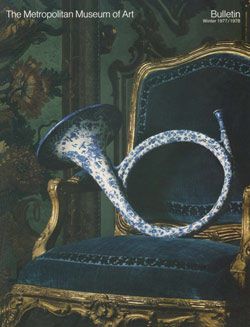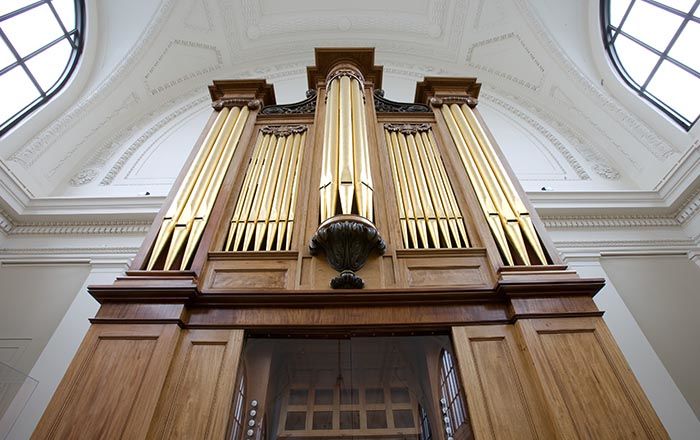Gyo
Not on view
Using a whisk-like split bamboo rod the player strikes the tiger's head three times, then creates a "purring" effect by rubbing the rod across the smiling feline's notched back. This scraping motion marks the conclusion of a Confucian hymn. In Japan where this gyo was made Confucianism was rare but in China prior to the 1911 Revolution the yü, as it was called there, enjoyed a 3,000 year history. Koreans, who still maintain traditional ritual, call it o. In more traditional forms the tiger is painted white, a symbol of the western region and Autumn, and, in keeping with this symbolism, is placed in the west side of the ceremonial hall, a location that connotes Harvest, Sunset, and Death. The inscription on this tiger's forehead means "music."
This image cannot be enlarged, viewed at full screen, or downloaded.
This artwork is meant to be viewed from right to left. Scroll left to view more.





